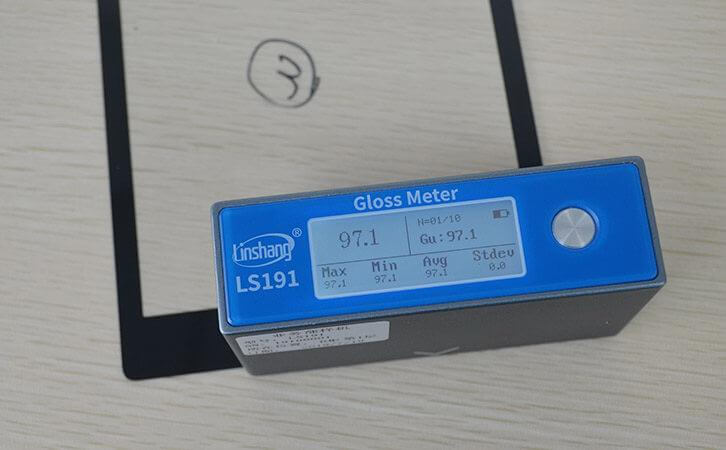What is the Surface Gloss of Printed Ink Film Related to?
Correlation between paper gloss and absorptive capacity: During the printing process, the ink film is transferred to the paper surface and filled with the unevenness of the paper surface, which makes the surface of the printed matter quite smooth. The specular reflection of light from the printed matter ink film surface determines the gloss. The surface of the ink film is related to the printing conditions, paper, ink properties.
1. Printing conditions
① Ink film thickness. Ink film thickness is the main factor affecting the gloss of printed matter. After the paper has absorbed the binder of the ink to the maximum, the remaining binder remains in the ink film, which can effectively improve the gloss of the printed matter. The thicker the ink film, the more linking material remaining, which is more conducive to improving the printed matter gloss. The study found that the tendency of gloss to increase with the ink film thickness varies with different papers and different inks. No matter what kind of paper, the amount of gloss increases with the ink film thickness has a certain limit.
The gloss of printed matter formed by printing with inks of different pigment contents varies greatly. Obviously, this difference is due to the different diameters of the ink pigments. In order to accurately obtain the change of the printed matter gloss with the the ink film thickness, gloss formed under different ink film thicknesses must be compared.
2. Ink properties
Print gloss depends not only on printing conditions, but also on the nature of the ink and paper. In order to further clarify the mechanism of print gloss formation, it is necessary to specifically discuss the influence of ink properties on print gloss and to clarify the relationship between the two. Print gloss depends on the smoothness of the ink film. The retention of the binder in the ink film is conducive to the improvement of smoothness. Therefore, the ink should contain uniformly dispersed fine pigments.
3. Paper properties
Smoothness and gloss. The smoothness of the paper and its own gloss also affect the gloss of the printed matter. High smoothness is conducive to the formation of a uniform and smooth ink film, thereby improving the gloss of printed matter. This has been confirmed by many researchers. The good gloss of the paper itself can improve the reflectivity of the ink film, especially for transparent inks. There is an excellent correlation between printed gloss and paper gloss, which is better than the correlation between printed gloss and paper absorption capacity.
4. Surface gloss of printed ink film
The gloss of the ink directly affects the appearance of the product. Therefore, the gloss of the ink is also called printing gloss. The higher the gloss, the brighter the color and the lower the gloss, the darker the color.
In order to obtain high-gloss prints, the printer must not only work hard on the ink's binder, but also apply varnish, plastic coating and film on the print. This reflects the importance of ink gloss. The measurement of ink gloss requires a surface gloss meter.
LS191 gloss meter
(1) After pressing the "Power"button to start the instrument, the instrument will enter the startup interface, preheat interface, self-test interface, calibration interface and measurement interface.
(2) Then you can start the measurement. Take off the base during the measurement and place the instrument on the ink surface to immediately display the test results.
(3) After the measurement is completed, buckle the base back and the instrument will automatically shut down after 15 seconds.
On the display interface of the surface gloss meter LS191, the maximum, minimum, average and standard deviation values can be automatically counted. The smaller the standard deviation, the more uniform the ink gloss.
